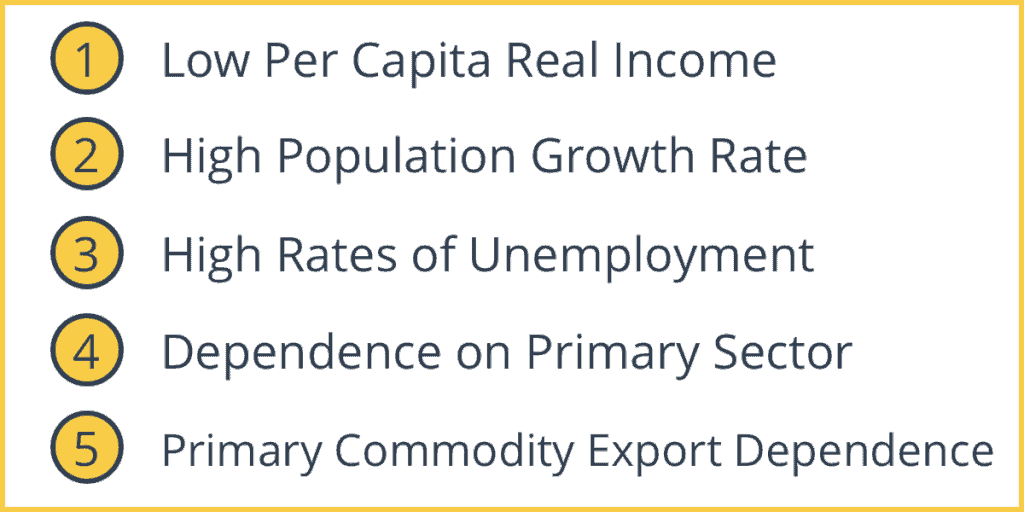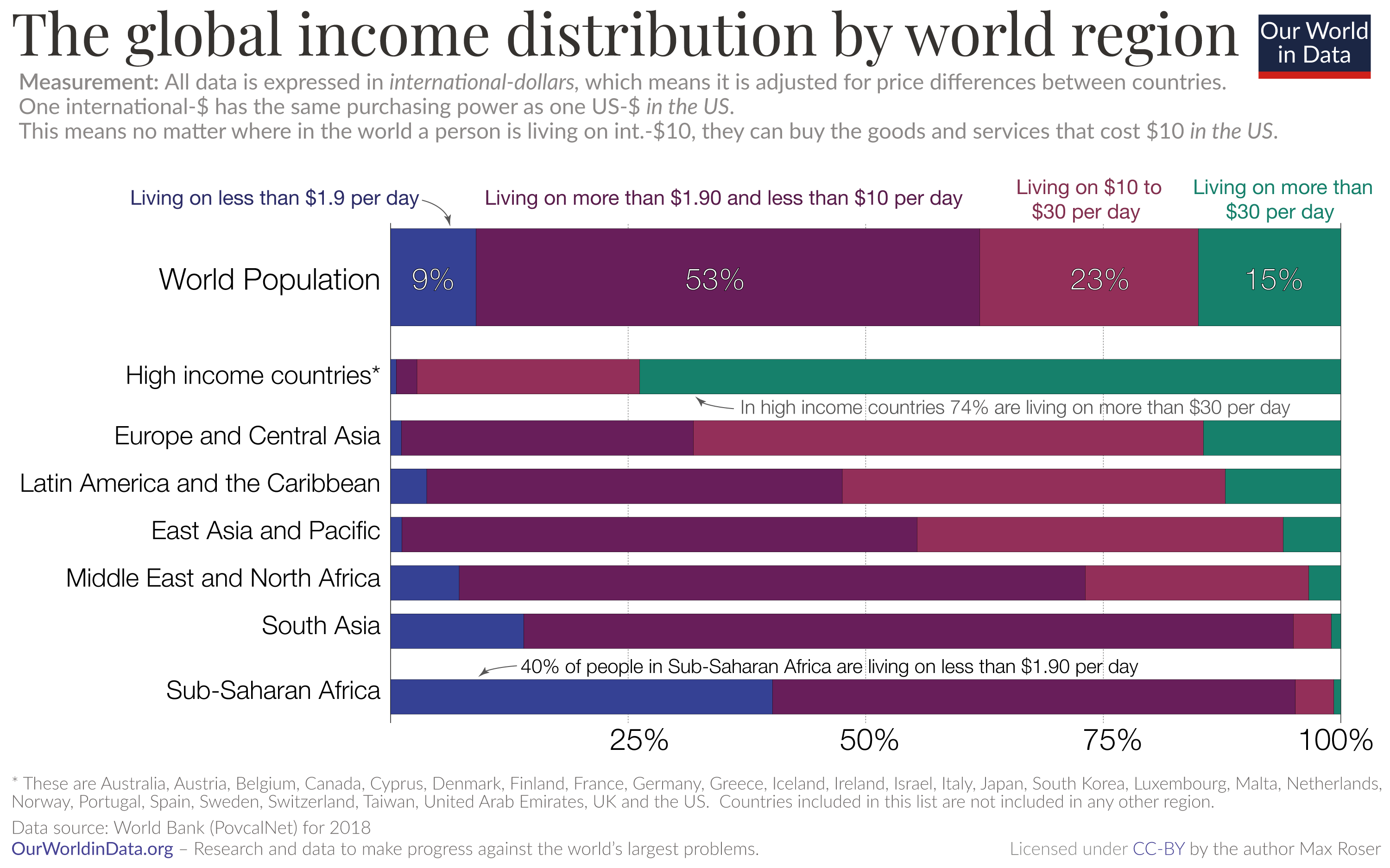Characteristics of Low Income Countries
5 drinks on one occasion in low-income or middle-income countries. Characteristics of Developed Countries.

Food Insecurity And Obesity Understanding The Connections Food Insecurity Obesity Understanding
Lower- and middle-income countries to make decisions about effective health literacy interventions for individuals and communities.

. Therefore the supply of labour is inelastic to a great extent. In the World Development Indicators database and most other time series datasets all 189 World Bank member countries plus 28 other economies with populations of more than 30000 are classified so that data users can aggregate group and compare statistical data of interest and for the presentation of key statisticsThe main classifications provided are by geographic. It cannot be increased or decreased immediately.
While developing countries are countries where the level of welfare of the population is still in the middle of developing level. By having a high income per capita the countrys economic value will be boosted. Further details of the study design and sociodemographic and clinical characteristics of mothers and.
An early governmental measure that slightly reduced. Deakin University in collaboration with the WHO Regional Office for South-East Asia developed health literacy measurement tools which are suitable for use in low- and middle-income countries. In lower-income countries however project development and operating environments can make the open cycle gas turbine OCGT a more affordable option and.
The aim of this systematic review and meta-analysis. Over the last two decades the combined cycle gas turbine CCGT has become the dominant technology for gas-fired power due to its high efficiency low operating costs and low emissions. Has a high income per capita.
Alcohol is a leading risk factor for over 200 conditions and an important contributor to socioeconomic health inequalities. Screening has been proposed to improve identification and management of these disorders but little is known about the validity of screening tools for these disorders. The LIHTC was enacted as part of the 1986 Tax Reform Act and has been modified numerous times.
Communicable disease still accounts for. And where the social. School feeding programs are beneficial for the physical mental and psychosocial development of school-age children and adolescents particularly those in low- and middle-income countries LMICs.
Population cannot be increased or decreased quickly. Extensive research has found the Special Supplemental Nutrition Program for Women Infants and Children WIC to be a cost-effective investment that improves the nutrition and health of low-income families leading to healthier infants more nutritious diets and better health care for children and subsequently to higher academic achievement for students. The total number of men and women working full-time year-round with earnings increased by 22 million between 2015 and 2016.
The opposite is true in low-income nations. The 2016 real median earnings of men and women who worked full-time year-round was 51640 and 41554 respectively not statistically different from their 2015 estimates. The Low-Income Housing Tax Credit LIHTC subsidizes the acquisition construction and rehabilitation of affordable rental housing for low- and moderate-income tenants.
Developed countries have high per capita incomes each year. However little is known about the associations between individuals socioeconomic circumstances and alcohol consumption especially heavy episodic drinking HED. In high-income nations NCDs typically account for more than 80 percent of disease burden.
While school feeding programs are ubiquitous in LMICs the specific benefits of school feeding programs are unclear. Income inequality has fluctuated considerably since measurements began around 1915 declining between peaks in the 1920s and 2007 CBO data or 2012 Piketty Saez Zucman dataInequality steadily increased from around 1979 to 2007 with a small reduction through 2016 followed by an increase from 2016 to 2018. The first important feature of the developing countries is their low per capita income.
The National Institutes of Health NIH participating Institutes and Centers ICs in collaboration with the Global Alliance for Chronic Diseases GACD invite applications for implementation research focused on addressing risk factors for common noncommunicable diseases NCDs in World Bank-defined low- and middle-income countries LMICs and American IndianAlaska. Anxiety and post-traumatic stress disorder PTSD contribute significantly to disability adjusted life years in low- to middle-income countries LMICs. In the field of global mental health reciprocal learning is a multidirectional exchange of research advancements requiring sharing of ideas and collaboration.
Bacteria that cause neonatal sepsis in seven low- and middle-income countries. Low Per Capita Income. In contrast communicable diseases to be low at less than 5 percent.
These are as follows. Stakeholders reported that low-income families tended to use the support they get through the Supplemental Nutrition Assistance Program to buy cheaper less healthful foods to be able to afford more food Table 2 quotes 3234. The supply of labour can be increased to a limited extent by importing labour from other countries in the short period.
The supply of labour depends upon the size of population. According to the World Bank estimates for the year 1995 average per capita income of the low income countries is 430 as compared to 24930 of the high-income countries including USA UK France and Japan. In order to understand the Indian Economic landscape it is important to make note of some of the basic characteristics of India as a developing economy.
Are defined according to the fiscal year 2022 World Bank designations of low- and middle-income countries LMICs see World Bank Data Helpdesk webpage. Low Per Capita Income PCI According to the International Monetary Funds Report in 2017 Indias PCI was 1983 and was ranked 140 out of 188 countries. The category of newly industrialized country NIC newly industrialized economy NIE or middle income country is a socioeconomic classification applied to several countries around the world by political scientists and economistsThey represent a subset of developing countries whose economic growth is much higher than other developing countries.
Linked to families economic situation are competing priorities that overrule child obesity and health-risk. We conducted a systematic review of.

Characteristic Of Servant Leadership Servant Leaders Clarified A Group By Listenin Servant Leadership Servant Leader Leadership

Characteristics Of Developing Economies Intelligent Economist
Lesson 2 What Is Development Economics 1 Iau Office Of Astronomy For Development

Global Poverty In An Unequal World Who Is Considered Poor In A Rich Country And What Does This Mean For Our Understanding Of Global Poverty Our World In Data

Characteristics Of Developing Economies Intelligent Economist
:max_bytes(150000):strip_icc()/What-factors-influence-microeconomic_round2-b5aa0bb64b7045819fc19c99649d7482.png)
What Factors Influence Competition In Microeconomics
0 Response to "Characteristics of Low Income Countries"
Post a Comment